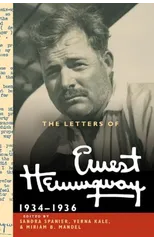The Old Man and the Sea is said to be the last major endearing work of fiction for which Ernest Hemingway won the Nobel Prize for literature in 1954. The novella is a heartrending tale of a Cuban fisherman named Santiago and a young boy Manolin who likes the company of the old man despite strong opposition from his parents. Santiago goes through a low phase and a dry spell of eighty-four days. Santiago is branded as being unlucky and Manolin is forbidden to sail with Santiago but he makes it a point to take care of his needs. On the eighty-fifth day Santiago feels he is going to be lucky and he sails far out into the sea and manages a great catch, a giant marlin. The book deals with the ordeal of Santiago's struggle to keep his sanity for two long days out in the sea where he develops a fondness for the marlin. Read on to know what happens to the giant marlin and whether Santiago survives against the odds…
Ernest Hemingway
Ernest Hemingway (1899-1961) was an American novelist, short story writer, and journalist known for his distinctive writing style and portrayal of masculinity. His most notable works include "The Old Man and the Sea," "A Farewell to Arms," and "The Sun Also Rises." Hemingway's writing is characterized by its spare prose, realistic dialogue, and emphasis on themes of war, love, and loss. He is credited with revolutionizing the modern American novel and influencing generations of writers with his minimalist approach to storytelling. "The Old Man and the Sea," a novella about an aging fisherman's struggle with a marlin, remains one of Hemingway's most famous and enduring works, winning him the Pulitzer Prize for Fiction in 1953 and solidifying his reputation as a literary giant.






